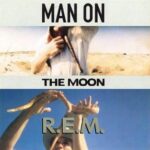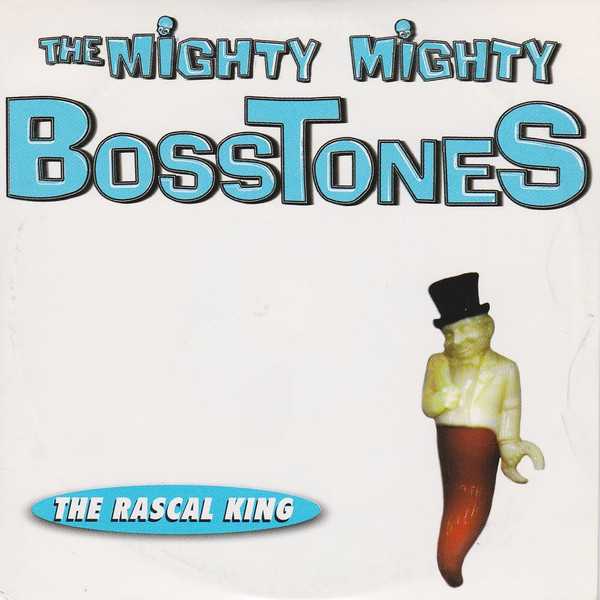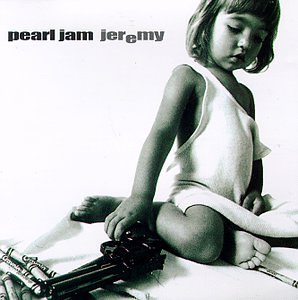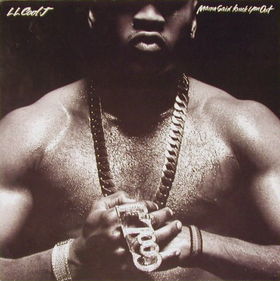 “Man On The Moon” by R.E.M. is a song that transcends the boundaries of rock music, blending storytelling, cultural commentary, and a deep sense of mystery into a haunting and memorable anthem. Released in 1992 as the lead single from their album Automatic for the People, the track has become one of the band’s most iconic and enduring works. It captures a unique mix of whimsy, skepticism, and homage, all wrapped in a melodic yet enigmatic package that invites listeners to look beyond the obvious and question what lies beneath the surface of myth and reality.
“Man On The Moon” by R.E.M. is a song that transcends the boundaries of rock music, blending storytelling, cultural commentary, and a deep sense of mystery into a haunting and memorable anthem. Released in 1992 as the lead single from their album Automatic for the People, the track has become one of the band’s most iconic and enduring works. It captures a unique mix of whimsy, skepticism, and homage, all wrapped in a melodic yet enigmatic package that invites listeners to look beyond the obvious and question what lies beneath the surface of myth and reality.
R.E.M., a seminal alternative rock band formed in Athens, Georgia, had already established themselves as pioneers of the genre by the early 1990s. With a sound characterized by jangly guitars, cryptic lyrics, and Michael Stipe’s distinctive vocal delivery, the band carved out a niche that combined introspection with political and cultural observation. “Man On The Moon” stands as a perfect example of their ability to fuse accessible melodies with layered meanings, creating a song that is both catchy and thought-provoking.
At its core, “Man On The Moon” is a tribute to the late comedian Andy Kaufman, a figure known for his eccentric performances, elaborate pranks, and blurred lines between reality and performance art. The lyrics reference Kaufman’s career and his mysterious persona, evoking his ability to challenge audiences’ perceptions and provoke both laughter and confusion. Yet, the song goes beyond simply honoring Kaufman—it delves into broader themes of belief, skepticism, and the nature of truth, using Kaufman’s enigmatic life as a springboard for exploring human curiosity and doubt.
Musically, “Man On The Moon” is built on a foundation of jangling guitars, steady drums, and melodic bass lines, all combining to create a mid-tempo groove that is instantly recognizable. The band’s instrumental interplay is tight and nuanced, with guitarist Peter Buck’s chiming riffs weaving through the rhythm section laid down by Mike Mills and Bill Berry. Michael Stipe’s vocal delivery is both conversational and poetic, adding layers of emotion and ambiguity to the lyrics. The song’s structure is straightforward yet effective, with a memorable chorus that invites listeners to sing along while pondering the questions posed.
The lyrics of “Man On The Moon” are rich with cultural references and cryptic lines, contributing to the song’s enigmatic allure. The title itself alludes to the famous Apollo moon landing, a historic event that has also been the subject of conspiracy theories and doubt. This theme of questioning accepted narratives runs throughout the song, with references to Kaufman’s work, popular myths, and the challenge of discerning reality from illusion. Lines like “If you believed they put a man on the moon, man on the moon” highlight the tension between belief and skepticism, encouraging listeners to reflect on what they accept as truth.
“Man On The Moon” also pays homage to various aspects of pop culture and human experience, weaving together images and ideas that evoke nostalgia and curiosity. Mentions of television shows, movies, and historical figures create a tapestry that situates the song within a broader cultural context. This blending of personal and collective memory adds depth to the song, making it resonate on multiple levels. It becomes not just a tribute to Kaufman but a meditation on how stories and myths shape our understanding of the world.
The song’s genesis is closely tied to R.E.M.’s interest in exploring themes of mortality, belief, and cultural memory, which permeate the Automatic for the People album. “Man On The Moon” fits seamlessly into this framework, offering a lighter, more playful counterpoint to the album’s often somber and reflective tone. Its upbeat yet enigmatic nature made it a standout track and a fan favorite, contributing significantly to the album’s critical and commercial success.
“Man On The Moon” was co-written by all four members of R.E.M.—Michael Stipe, Peter Buck, Mike Mills, and Bill Berry—demonstrating the collaborative spirit that defined much of the band’s work. The songwriting process combined the band’s penchant for cryptic lyrics with melodic hooks, resulting in a song that is both musically engaging and lyrically intriguing. The band’s production choices emphasize clarity and balance, allowing each instrument and vocal line to contribute to the overall mood without overpowering the song’s subtle nuances.
Upon its release as a single in 1992, “Man On The Moon” received widespread acclaim from critics and fans alike. It charted well internationally and helped solidify R.E.M.’s status as one of the leading alternative rock bands of the era. The song’s success was also boosted by its association with the 1999 biographical film Man on the Moon, starring Jim Carrey as Andy Kaufman. The movie, directed by Miloš Forman, introduced Kaufman’s story to a broader audience, and R.E.M.’s song served as both the title track and a thematic anchor for the film.
The cultural impact of “Man On The Moon” extends far beyond its initial release. It has become a staple of R.E.M.’s live performances and is frequently cited as one of their signature songs. Its catchy chorus and memorable melody make it a favorite singalong for audiences, while its layered lyrics invite repeated listening and interpretation. The song’s blend of humor, mystery, and heartfelt tribute sets it apart as a unique contribution to rock music and cultural discourse.
R.E.M.’s ability to craft a song that operates on multiple levels is exemplified in “Man On The Moon.” The track’s accessible sound draws listeners in, while its cryptic references and thematic depth encourage deeper engagement. This duality is part of what has given the song its enduring appeal, allowing it to resonate with diverse audiences over time. Fans appreciate the song as both a catchy rock anthem and a thoughtful exploration of identity and belief.
The themes explored in “Man On The Moon” also reflect broader human experiences. The tension between skepticism and faith, reality and illusion, is a universal dynamic that the song captures through its storytelling. Andy Kaufman’s life and career serve as a metaphor for these themes, embodying the complexities of performance, truth, and perception. The song’s invitation to question what we accept as reality resonates in an age where information and misinformation coexist in complicated ways.
Musically, “Man On The Moon” showcases R.E.M.’s distinctive style, which blends elements of folk, rock, and alternative influences. The song’s arrangement balances melodic simplicity with emotional resonance, creating a sound that is both approachable and evocative. Peter Buck’s guitar work is a highlight, delivering shimmering riffs that define the track’s sonic character. The rhythm section’s steady drive underpins the melody, while Stipe’s vocals weave in and out with a conversational yet poetic tone.
Lyrically, the song’s references are layered and nuanced. Mentions of Kaufman’s alter egos, such as Tony Clifton, and allusions to popular culture create a rich narrative that invites interpretation. The refrain “If you believed they put a man on the moon” serves as a refrain not only about the literal event but also about belief itself. The song challenges listeners to consider the nature of truth and the stories we tell ourselves, making it as much a philosophical reflection as a musical tribute.
The production quality of “Man On The Moon” complements its themes and mood. Produced by Scott Litt alongside R.E.M., the track features a clean, polished sound that retains the band’s raw energy. The layering of instruments and vocals is carefully balanced, allowing the song’s subtleties to emerge without sacrificing its anthemic quality. This production approach helped the song achieve both radio-friendly appeal and artistic depth.
Over the years, “Man On The Moon” has been covered, referenced, and celebrated across various media. Its influence can be seen in the work of other artists who explore themes of identity, performance, and skepticism. The song’s integration into the 1999 biopic of Andy Kaufman further cemented its place in popular culture, introducing it to new audiences and generations.
Live performances of “Man On The Moon” have often highlighted its communal and participatory nature. R.E.M.’s concerts feature the song as a moment for audience singalongs, reflecting its role as a unifying anthem. Michael Stipe’s vocal delivery in live settings can range from playful to introspective, emphasizing the song’s emotional range. These performances underscore the song’s ability to connect deeply with listeners and create shared experiences.
“Man On The Moon” also exemplifies R.E.M.’s talent for blending personal and cultural narratives. While the song is rooted in Kaufman’s story, it expands to comment on broader societal themes, including the construction of myth and the human desire for meaning. This complexity adds to the song’s richness, making it a subject of analysis and appreciation within music criticism and popular discourse.
The enduring popularity of “Man On The Moon” is a testament to its artistry and relevance. It remains a touchstone for fans of R.E.M. and a compelling example of how music can engage with complex ideas while remaining emotionally resonant. The song’s fusion of melody, lyricism, and cultural commentary continues to inspire listeners and artists alike.
In conclusion, “Man On The Moon” by R.E.M. is a masterful blend of storytelling, cultural homage, and musical craftsmanship. Through its enigmatic lyrics, memorable melody, and heartfelt tribute to Andy Kaufman, the song invites listeners to explore themes of belief, identity, and the interplay between reality and illusion. Its place in the band’s discography and popular culture at large reflects its significance as both a work of art and a cultural statement. Decades after its release, “Man On The Moon” endures as a captivating anthem that continues to provoke thought, evoke emotion, and celebrate the power of music to tell stories that resonate across time.


